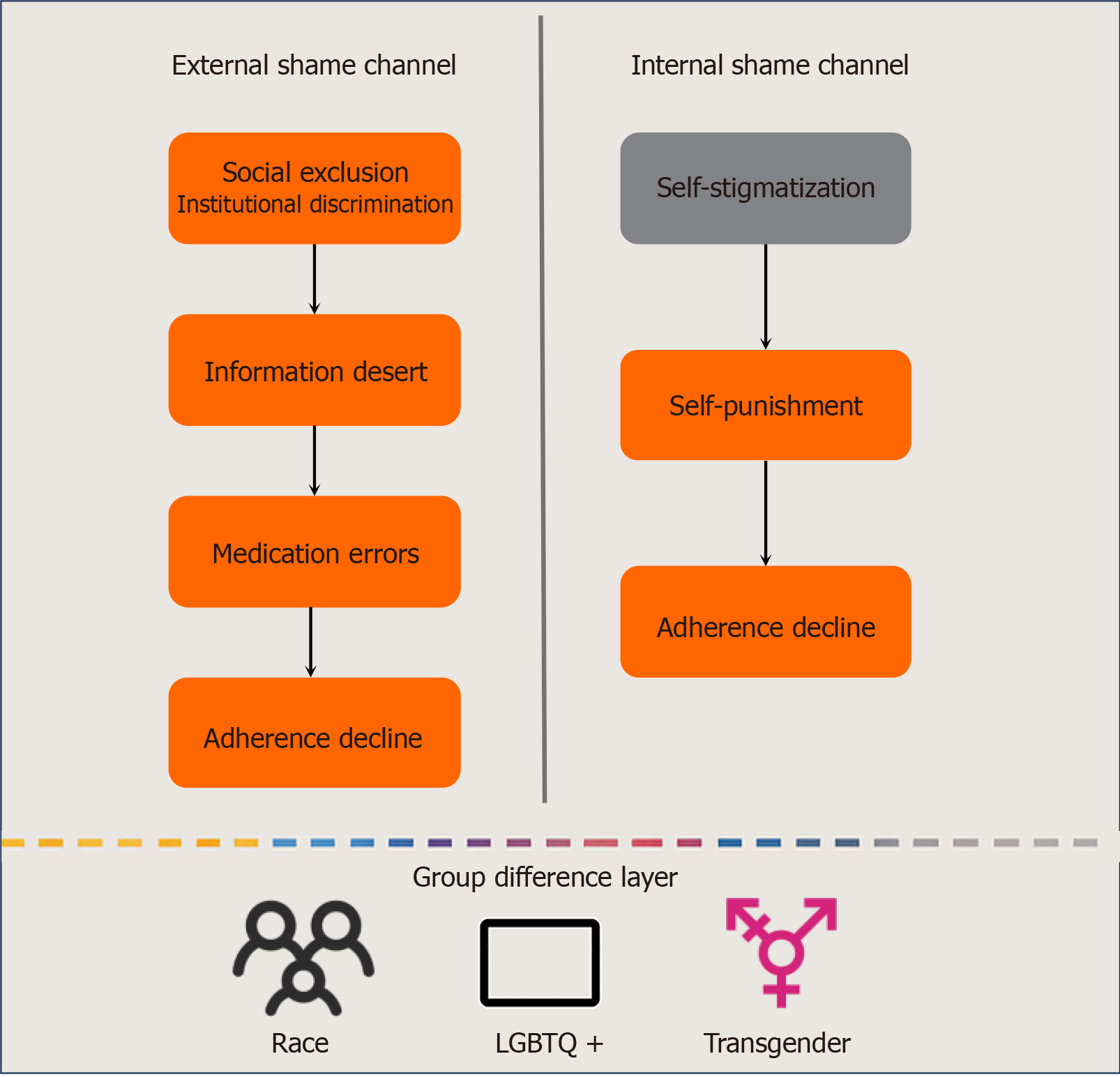Copyright
©The Author(s) 2025.
World J Psychiatry. Aug 19, 2025; 15(8): 107885
Published online Aug 19, 2025. doi: 10.5498/wjp.v15.i8.107885
Published online Aug 19, 2025. doi: 10.5498/wjp.v15.i8.107885
Figure 1 Positive feedback loop of self-efficacy enhancement in human immunodeficiency virus treatment adherence.
Self-efficacy enhancement in people living with human immunodeficiency virus follows a dynamic feedback loop that integrates behavioral, cognitive, and relational mechanisms. The process begins with micro goal achievement, such as taking medication on time for 3 consecutive days, which activates dopaminergic reward pathways and reinforces self-efficacy. This enhancement is further consolidated through learning via digital platforms, promoting structured knowledge acquisition and strengthening patients' confidence in medication management. As patients engage in proactive knowledge acquisition, their understanding of pharmacological principles deepens, leading to enhancing medication confidence and better decision-making in daily treatment adherence. These improvements contribute to adherence consolidation, which not only stabilizes behavioral patterns but also creates a virtuous cycle of successful experiences. The entire loop is sustained by social support and patient-provider trust, which modulate motivational systems and extend the effects of dopaminergic reinforcement.
Figure 2 Dual-channel mechanisms of human immunodeficiency virus-related shame on treatment adherence.
Human immunodeficiency virus (HIV) related shame impairs treatment adherence through two complementary pathways: The external shame channel and the internal shame channel. The external shame channel follows a cascade in which social exclusion, reinforced by institutional discrimination, limits access to reliable health information, creating an information desert. This deficit increases the likelihood of medication errors, ultimately leading to adherence decline. Conversely, the internal shame channel reflects a self-directed mechanism, where self-stigmatization erodes treatment confidence, prompting self-punishment behaviors that further undermine adherence. Both pathways converge on adherence outcomes but are mediated by distinct psychosocial processes. At the foundation, the group difference layer highlights how intersecting identities-such as race, LGBTQ+ identity, and transgender status-amplify the effects of stigma through layered social disadvantages. These factors modulate the severity and progression of shame-related adherence barriers among people living with HIV. LGBTQ+: Lesbian, gay, bisexual, transgender, queer/questioning, plus.
- Citation: Xu CH, Hu D, Lin HJ, Yang YD, Li MN, Shao LW. Medication literacy and treatment adherence in people living with human immunodeficiency virus: Mediating effects of psychosocial factors. World J Psychiatry 2025; 15(8): 107885
- URL: https://www.wjgnet.com/2220-3206/full/v15/i8/107885.htm
- DOI: https://dx.doi.org/10.5498/wjp.v15.i8.107885










